Festivals :
The people of Sonitpur district celebrate Bihu, Durga Puja, Idd, Christmas, Bathou Puja, Chat Puja etc. like other people of Assam.
- The Magh Bihu or The Bhogali BihuThe Magh or the Bhogali Bihu, the harvesting festival is celebrated in January by community feast, buffalo fight and such other entertainment. The Maagh Bihu marks the end of the harvesting period. Maagh Bihu is also called Bhogaali Bihu or the Festival of Food.
- Bohag Bihu or The Rongali BihuFestival of the Assamese New Year which falls in mid-April. During this festival the markets and homes are flooded with sweetmeats. It also marks the arrival of Assamese New Year(around April 15). Through this festival Assamese welcome the season of seed sowing and pray for a great harvest. The festival stretches for several days. During the festival the womenfolk get busy making delicious Pitha, larus(traditional food prepared from rice and coconut) and Jolpan.Rongali Utsav is the time to prepare the fields for crops. The first day of the festival is called 'Goru Bihu' or 'Cow Bihu'. On this day cows are bathed at the nearby ponds and decorated with leaves. They are given good food and are treated like guests. Throwing pieces of aubergine, turmeric and gourd on the cattle is one of the rituals observed during the first day of the festival. The remaining days of the festival are called 'Manuh Bihu'. During the festival Bihu dance is performed by young people with great joy. The dance is performed on folk songs known as Bihu Songs. Pepa (a flute made of buffalo horns), drums,dhol, tala(a cymbal), gogona (a bamboo instrument) and toka (a bamboo clapper) are the instruments used in Bihu folk songs.
- Ali-Ai-LigangThe Ali-ai-Ligang Festival in Assam is celebrated during the spring season. It is held every year on the first Wednesday of the month of ‘Ginmur Polo’ or February-March. The Ali-ai-Ligang Festival in Assam goes on continuously for 5 days. IndianHoliday offers online booking and other essential information about Ali-ai-Ligang Festival in Assam, India. The Ali-ai-Ligang Festival is the most vibrant festival of the Mishing people. The name Ali-ai-Ligang is significant; “Ali” means root and seed, “ai” means fruit and “Ligang” means sow. This is the reason why, the sowing in of paddy is started on this day ritually. After the ceremonial sowing of the paddy seeds, a dance is performed by the young boys and girls of the tribe. In the Assam Ali-ai-Ligang Festival, this popular dance performed by the young people is characterized by rapid stepping, flinging and fluttering of hands. The dance rule also demands swinging of hips which reflect vernal passion and procreative urge along with enjoyment. During The Ali-ai-Ligang Festival of Assam, after the sowing ceremony and the traditional dance function, a grand feast is essential. For the feast, ‘Poro Aapong’ or rice beer, dried fish and Pork is a must. During the entire time stretch of the festival, certain taboos are purely observed with respect to cutting trees, ploughing, fishing, burning jungles and many more.
- The Kati Bihu to the Kongaali BihuKati Bihu celebrated in the month of Kartika(mid of october). The Kaati Bihu marks the completion of sowing and transplanting of paddies. Kaati Bihu is also called Kongaali Bihu or the Festival of the Poor.
- Bare Shaharia BhaonaGenerally the term Bhaona in Assamese means a cultural activity involving dramas, depicting the various stories taken from the epics. These dramas were mostly written by Sankardeva and Madhabdeva. Bare Shaharia Bhaona of Jamuguri (50 kms from Tezpur) is a unique form of Bhaona. Twelve or more Bhaonas are performed simultaneously in different stages built on a single platform.
- Sivaratri FairIt is held at Mahabhairab Temple (Tezpur), Halleswar Temple (Halleswar), Singri Temple (Dhekiajuli), Biswanath Temple (Biswanath Ghat), Kalyani Temple (Gohpur).The auspicious festival of Maha Shivaratri is celebrated with devotion and religious fervor all over India and even beyond. Though fasting and worship of Shiva Linga with a ritual bath remain the common feature of Shivaratri celebrations at all places, minor variations due to regional difference can be observed in some states.
Culture :
Tezpur can be described as the cultural capital of Assam. Every landscape of Tezpur reflects its rich cultural heritage since time immemorial. Tezpur was a cradle to three doyens of Assamese Culture: Rupkonwar Jyotiprasad Agarwala, Kalaguru Bishnu Prasad Rava, and Natasurya Phani Sarma.
Sonitpur, like the rest of the nation, witnessed the amalgamation of different cultures of different peoples at different times.
Along with the natural evolution of the indigenous Assamese culture, several cultural traits of different subsequent groups which were assimilated in it added to its lustre and bounty.The Tezpur festival provides a great opportunity to see and feel all that Tezpur and Assam has to offer.
Performances by renowned artists in the amphitheatres of Agnigarh and Chitralekha Udyan will be a memorable experience. The whole repertoire of the dances of Assam: Sattriya, Bihu, Jhumur and Bagrumba will dazzle you. One will surely carry home the fragrance of the culture of Assam.
Sonitpur, like the rest of the nation, witnessed the amalgamation of different cultures of different peoples at different times.
Along with the natural evolution of the indigenous Assamese culture, several cultural traits of different subsequent groups which were assimilated in it added to its lustre and bounty.The Tezpur festival provides a great opportunity to see and feel all that Tezpur and Assam has to offer.
Performances by renowned artists in the amphitheatres of Agnigarh and Chitralekha Udyan will be a memorable experience. The whole repertoire of the dances of Assam: Sattriya, Bihu, Jhumur and Bagrumba will dazzle you. One will surely carry home the fragrance of the culture of Assam.
Some of the Frontiers of Assamese Culture :
Tezpur is considered to be the cultural capital of Assamese culture. Being from the core Assamese cultural region, the town has produced many stalwarts such as Dr. Bhupen Hazarika, Jyoti Prasad Agarwala (1903–51), Kalaguru Bishnu Prasad Rabha (1909–69), Phani Sarma (1909–70) and Ananda Chandra Agarwala (1874–1939). It is also the birth place of the former Speaker of the Indian Parliament (2004–2009), Somnath Chatterjee.
Kalaguru Bishnuprasad Rabha
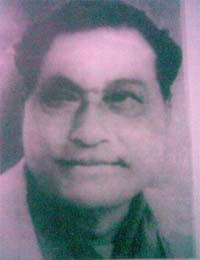
Kalaguru Bishnuprasad Rabha (1909–69): Bishnuprasad Rabha was born in Dhaka, Bangladesh on January 31, 1909. His father Gopal Chandra Rabha was in the British Police and the family was financially sound. Bishnu Rabha spent his childhood in Dhaka and started his primary education in bengali medium there. After the primary schooling his family shifted permanatly to Tezpur, Assam. Bishnu Rabha started his high school education in Tezpur Government High School. From the same school he passed out in flying colors and went to Calcutta for higher education. He completed ISC exam successfully from St. Paul's Mission College and joined prestigious Ripon college in Calcutta for Bsc.
Bishnu Rabha was influenced by Mahatma Gandhi those in 1930. He actively participated in the freedom movement and this affected his education. He wrote many slogans and hoisted Indian tricolour falgs in many government buildings in Calcutta. This forced British police to issue non-bailable warrant against him. Bishnu Rabha fled from calcutta to Tezpur and started his activities from there. He led Assam in the freedom movement and parallelly expressing his in born artistic talents. He donated all his inherited 2500 bighas of land to the poor farmers.
Bishnu Rabha always worked for the upliftment of his own society. All his writings, songs, arts are just by product of that. The books wriiten by hime like His achievements like Axomiya Kristir Somu Abhax (An outline of the Assamese culture), Axomiya Kristi (The Assamese culture), and Mukti Deol (The temple of freedom) are reflections of his socialistic notions. His residence is still a cultural hub cosisting of a recording studio.website- http://rgoaudio.webs.com/
Bishnu Rabha was influenced by Mahatma Gandhi those in 1930. He actively participated in the freedom movement and this affected his education. He wrote many slogans and hoisted Indian tricolour falgs in many government buildings in Calcutta. This forced British police to issue non-bailable warrant against him. Bishnu Rabha fled from calcutta to Tezpur and started his activities from there. He led Assam in the freedom movement and parallelly expressing his in born artistic talents. He donated all his inherited 2500 bighas of land to the poor farmers.
Bishnu Rabha always worked for the upliftment of his own society. All his writings, songs, arts are just by product of that. The books wriiten by hime like His achievements like Axomiya Kristir Somu Abhax (An outline of the Assamese culture), Axomiya Kristi (The Assamese culture), and Mukti Deol (The temple of freedom) are reflections of his socialistic notions. His residence is still a cultural hub cosisting of a recording studio.website- http://rgoaudio.webs.com/
Rupkonwar Jyoti Prasad Agarwala
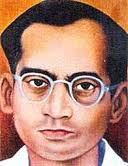
Jyoti Prasad Agarwalla(1903–51): Known as 'Rupkonwar' (Prince of Beauty) to the Assamese, Agarwala's main artistic and political journey begins in the 1930s. He dedicated himself fully to the freedom movement. He was even jailed for 15 months and fined 500 rupees for his active involvement in the struggle for independence. Meanwhile he kept on working for the artistic and cultural upliftment of the Assamese society.
Jyoti Prasad Agarwala started writing since the age of 14 years only. At that time he wrote down the famous play 'Sonit-Konwari'. For next few years during his student days he wrote many short stories. Agarwala was focused on studying children psychology. He wrote many stories for children. Some other plays written by him are Rupalim, Karengar Ligiri, and Lobhita. Agarwala wrote more than 300 poems and set music to most of them. These songs collection is known as Jyoti Sangeet. It became a new genre of music itself in Assam in later days.
Agarwala is considered the father of Assamese film. He invested huge amount of time and his own money into it. He had a studio called 'Chitrban' set up at the Bholaguri tea estate in Tezpur in 1934. The film 'Joymati' was shot there and released in 1935, starring Phani Sarma (1909–70). In 1939 Agarwala made the second Assamese movie 'Indramalati'. He also built a cinema hall called 'Junaki' opened in Tezpur in 1937. Another contribution of Agarwala is the publication of the newspaper 'Axomiya' from 1944 and onwards. He also established an Assamese music school in Tezpur. The Assamese poet Chandra Kumar Agarwala was his uncle. While Agarwala was in the charge of Tamulbari tea estate of Dibrugarh, the same place where he was born, he suffered from cancer and died merely 48 years old on 17 June 1951. His death anniversary is calebrated as 'Jyoti Divas' in Assam on June 17 every year.
Jyoti Prasad Agarwala started writing since the age of 14 years only. At that time he wrote down the famous play 'Sonit-Konwari'. For next few years during his student days he wrote many short stories. Agarwala was focused on studying children psychology. He wrote many stories for children. Some other plays written by him are Rupalim, Karengar Ligiri, and Lobhita. Agarwala wrote more than 300 poems and set music to most of them. These songs collection is known as Jyoti Sangeet. It became a new genre of music itself in Assam in later days.
Agarwala is considered the father of Assamese film. He invested huge amount of time and his own money into it. He had a studio called 'Chitrban' set up at the Bholaguri tea estate in Tezpur in 1934. The film 'Joymati' was shot there and released in 1935, starring Phani Sarma (1909–70). In 1939 Agarwala made the second Assamese movie 'Indramalati'. He also built a cinema hall called 'Junaki' opened in Tezpur in 1937. Another contribution of Agarwala is the publication of the newspaper 'Axomiya' from 1944 and onwards. He also established an Assamese music school in Tezpur. The Assamese poet Chandra Kumar Agarwala was his uncle. While Agarwala was in the charge of Tamulbari tea estate of Dibrugarh, the same place where he was born, he suffered from cancer and died merely 48 years old on 17 June 1951. His death anniversary is calebrated as 'Jyoti Divas' in Assam on June 17 every year.
Dr Bhupen Hazarika
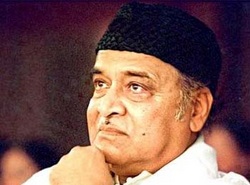
Bhupen Hazarika was born in Sadiya, Assam. A child prodigy, he wrote and sang his first song at the age of 10 and worked for the second Assamese talkie, Indramalati, in 1939, when he was 12 years old. He completed his Intermediate Arts from Cotton College in 1942, and went on to Banaras Hindu University to complete his B.A. in 1944 and his M.A. in Political Science in 1946. He earned a Ph.D. from Columbia University, New York, USA in 1954, submitting a dissertation titled "Proposals for Preparing India's Basic Education to Use Audio-Visual Techniques in Adult Education". He was the president of the "Axom Xahitya Xabha" in 1993, As a singer, he is known for his crisp baritone voice and flawless diction; as a lyricist, he is known for poetic compositions and parables that touch on a wide range of themes---ranging from the erotic to social and political commentary; and as a composer for his use of folk music with a touch of the contemporary. He also participated, first as a child artist, and later as a director, in the nascent Assamese film industry. When studying at Columbia University, he became acquainted with American performer Paul Robeson, from whom he also learned songs which he later adapted in his music career. He is immensely popular, touching on reverence, in the states of Assam, West Bengal as well as in neighbouring Bangladesh. In addition to his native Assamese, Hazarika has sung in many other Indic languages, including Bengali and Hindi.
Phani Sarma(1909–70)

Phani Sarma was an Assamese theatre actor, playwright, film actor and director. Beginning as a stage actor, he appeared in the first film ever made in Assamese cinema, Joymati. in 1935. He acted in and directed Siraj in 1948 and Pioli Phukan in 1955. The theatrical career of Phani Sarma started as a gatekeeper of the women’s gallery of the prestigious Ban Stage situated at Tezpur. His father Molan Sarma was also an exponent of drama and was a noted actor of Ban Stage. Along with his father, Phani Sarma regularly went to the Ban Stage and closely observed the distinguished acting of a number of veteran actors like Indreswar Borthakur, Dr Lalit Mohan Chowdhury, Prafulla Borua. This inspired young Bolin (as Phani Sarma was popularly known) towards acting and had a deep impact on his future life. In 1928, he got the opportunity to act on the Ban Stage for the first time in the role of Akbar in the drama Rana Pratap. That was the beginning of a new chapter in the life of Phani Sarma. In 1930, Phani Sarma joined the Kohinoor Opera, the first mobile theatre group of Assam, started by Natyacharya Brajanath Sarma. From Dhubri to Sadiya, from the north bank to the south bank of the Brahmaputra River, Kohinoor Opera performed its dramas, attracting thousands of spectators whi came to see Sarma perform. Apart from initiating a theatrical movement, the Kohinoor Opera introduced co-acting on the stages of Assam. In 1931, Brajanath Sarma, with the help of Phani Sarma introduced female actresses for the first time to appear in their drama productions at a time when male acting was completely dominant, revolutionizing the nature of Assamese theatre. In 1933 Phani Sarma played a significant role in the first Assamese feature film Joymati directed by Jyoti Prasad Agarwala, where he played the role of the historical figure of Gathi Hazarika, the villain of the film. The notable acting of Phani Sarma in that role was a special feature of the film which was released in 1935, and Sarma went on the star in Agarwalla's second picture Indramalati. In 1948 Sarma, along with Bishnu Rabha made a feature film Siraj, based on a popular short story written by Deshapran Lakshmidhar Sarma. In 1955 he directed and starred in Pioli Phukan, also playing the films protagonist Pioli Phukan. His last film was Ito Sito Bahuto in 1963 where he appeared as an actor rather than taking the director's helm.
Bihagikavi Ananda Chandra Agarwala (1874-1939)
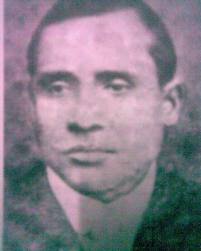
Apart from his own collection of poems he translated many English poems. He was President Assam Sahitya Sabha, Mangaldoi in 1934.
Bidekhot Apun Manuh :
Somnath Chatterjee (July 25, 1929)
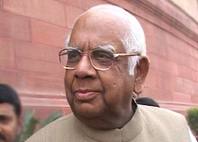
Born in Tezpur, Assam, into an aristocratic Calcutta family, his father, Nirmal Chandra Chatterjee, was a prominent lawyer and intellectual around the time of India's independence, and his mother, Binapani Debi ran the home. Somnath was educated at Mitra Institution School, Presidency College and then the University of Calcutta in Calcutta. He also attended Jesus College, Cambridge and graduating with a B.A. in 1952 and a M.A. in 1957, both in law, has been awarded an honorary fellowship by the college in 2007. He was called to the bar from the Middle Temple in London and took up legal practice as an advocate at the Calcutta High Court before joining active politics. His father N.C. Chatterjee at one time had been a Hindu revivalist, and was one of the founders and one-time president of the Akhil Bharatiya Hindu Mahasabha, but he developed differences with the Hindu nationalist tone espoused by the party, which is a forerunner of today's Bharatiya Janata Party (BJP). In 1948, when the communist party was banned in India and party leaders arrested, he formed the All India Civil Liberties Union, and agitated for their release. In the process, he came close to Jyoti Basu. He eventually left the Hindu Mahasabha when he got elected to the Parliament with CPI(M) support.
